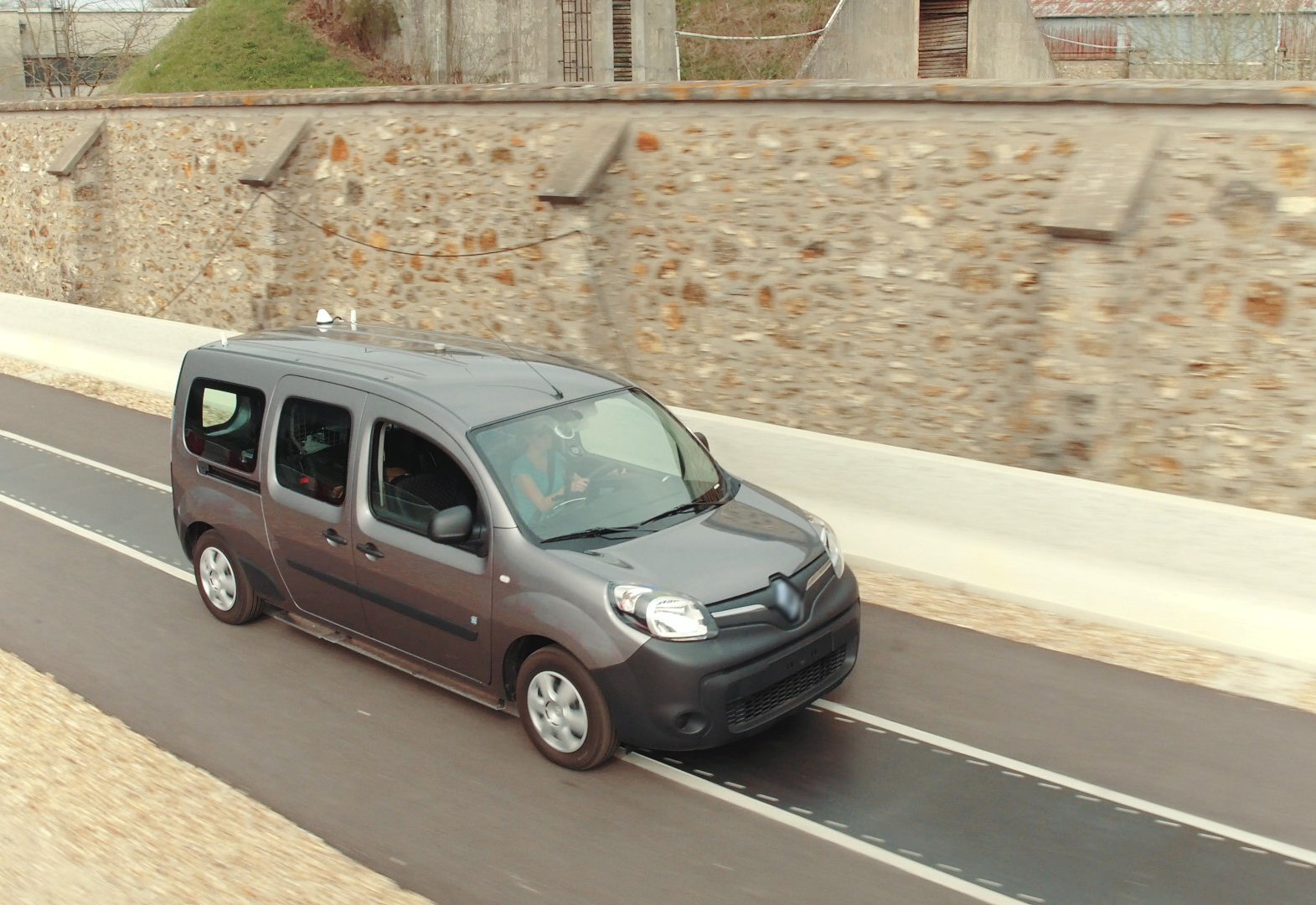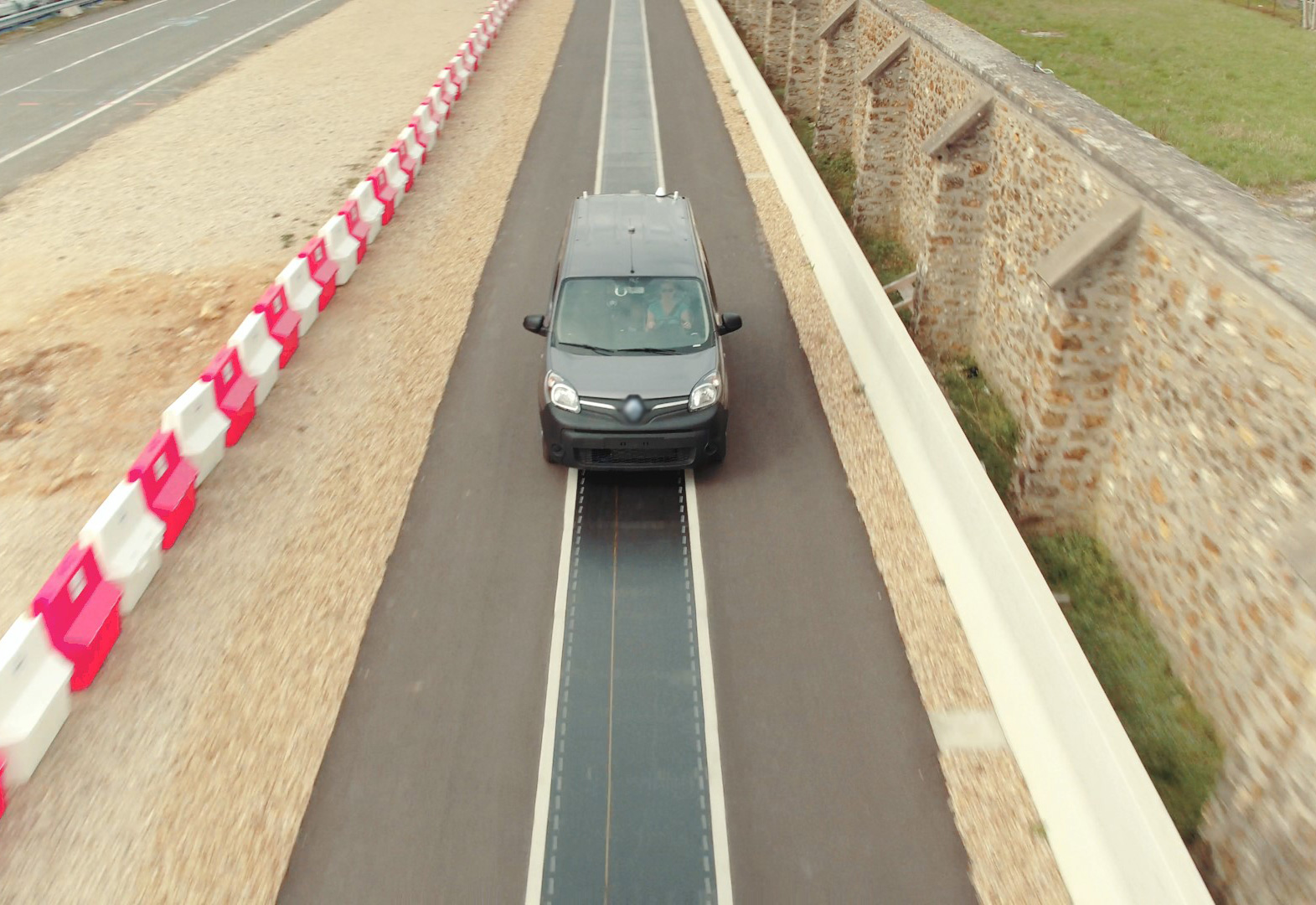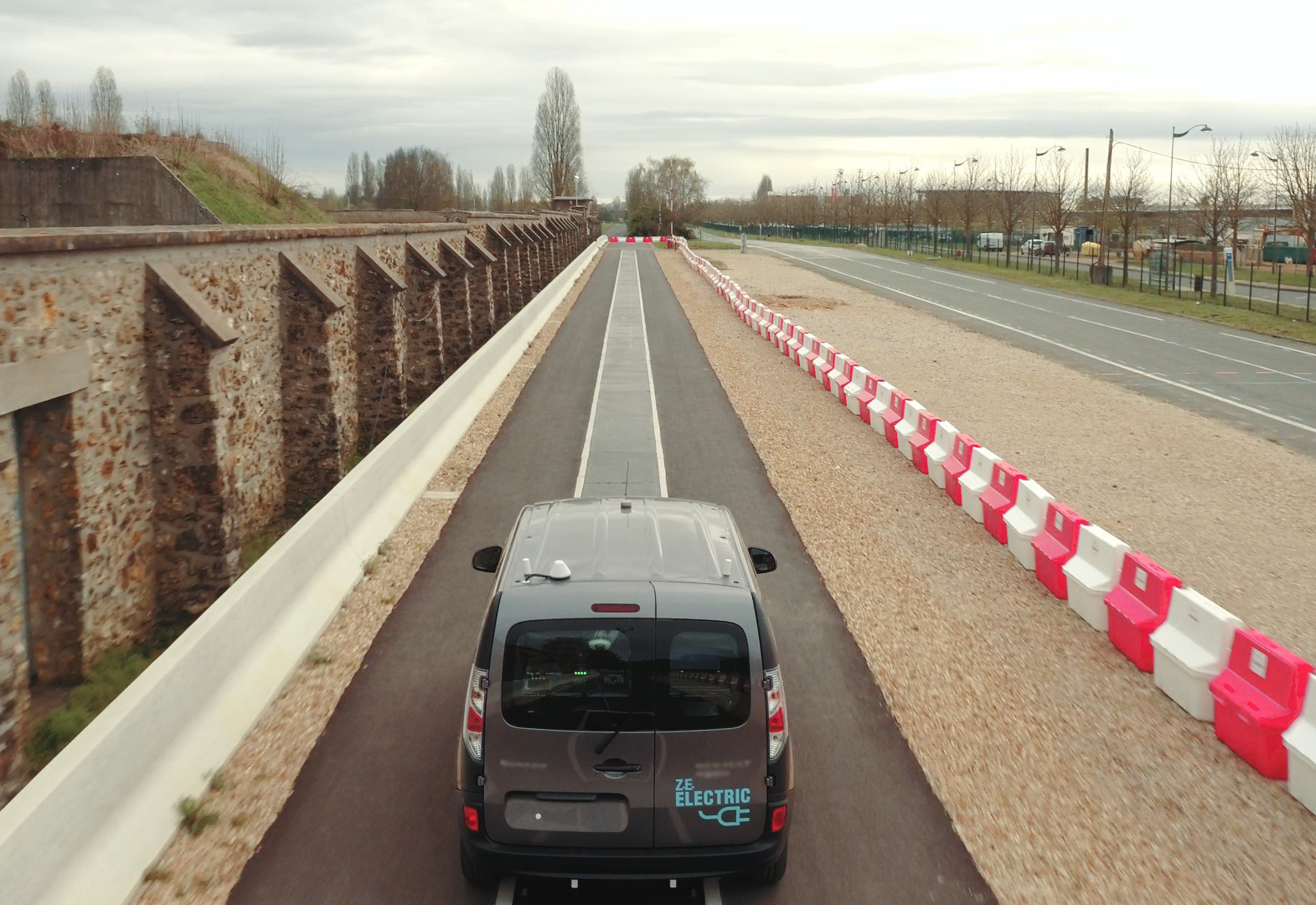


Renault has teamed up with Qualcomm Technologies and Vedecom in designing a DEVC system capable of charging an electric vehicle dynamically.
The dynamic wireless electric vehicle charging (DEVC), allows vehicles to charge up to 20 kilowatts - while driving at speeds up to, and in excess of 62mph.
The DEVC system has been designed to support real-world implementation of dynamic charging, with the two Renault Kangoo Z.E. vehicles picking up charge in both directions along the track.
The demonstration took place at the 100-metre test track, built by Vedecom at Satory, Versailles, near Paris, within the FABRIC project. Qualcomm Technologies and Vedecom installed the primary part of the DEVC system in the test track, whilst Vedecom and Renault installed the secondary part onto two Renault Kangoos.
The DEVC system will shortly be handed over to Vedecom to perform tests for FABRIC. The tests will evaluate the operation and efficiency of energy transfer to the vehicles for a wide range of practical scenarios including vehicle identification and authorisation on entering track, power level agreement between track and vehicle, speed and alignment of vehicle along track.
FABRIC (FeAsiBility analysis and development of on-Road chargIng solutions for future electriC vehicles) is a €9 million project, partly-funded by the European Union, addressing the technological feasibility, economic viability, and socio-environmental sustainability of wireless DEVC. The main aim of FABRIC is to conduct feasibility analysis of wireless DEVC as a means of EV range extension.
“Contributing to this exciting project has enabled us to test and further research dynamic charging on our Kangoo Z.E. vehicles,” said Eric Feunteun, Electric Vehicle Program Director, Groupe Renault. “Our research engineers have worked very closely with the Qualcomm Technologies and Vedecom teams to complete the DEVC system integration demonstration as part of FABRIC. We see dynamic charging as a great vision to further enhance the ease of use of EVs, and the accessibility of EVs for all.”
“We are inventors. We are wireless electric vehicle charging. This dynamic charging demonstration is the embodiment of this,” said Steve Pazol, vice president and general manager, Wireless Charging, Qualcomm Incorporated. “I am immensely proud of what we have achieved. The combination of a global team of expert engineers and Qualcomm Halo technology, which covers all aspects of WEVC systems, irrespective of the magnetics used, has enabled us to really push the boundaries of the possible and outline our vision for future urban mobility.”
